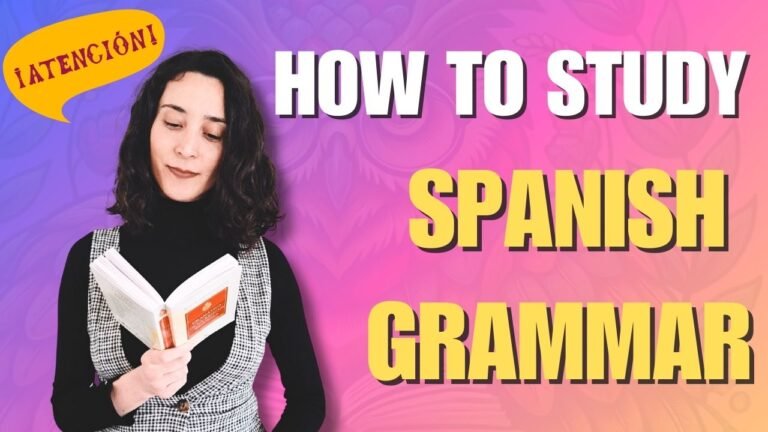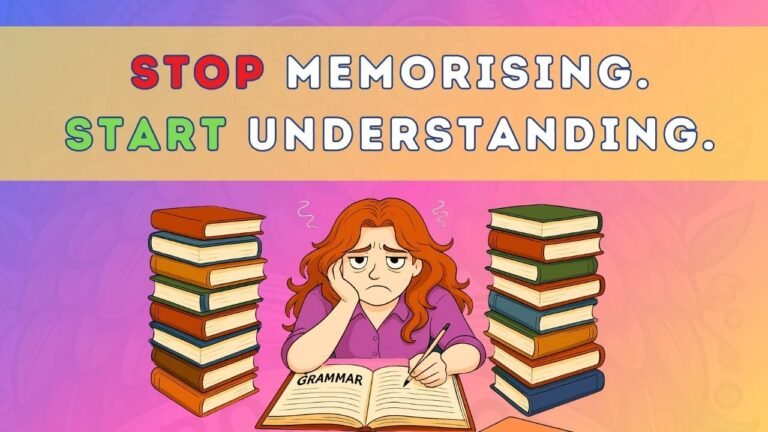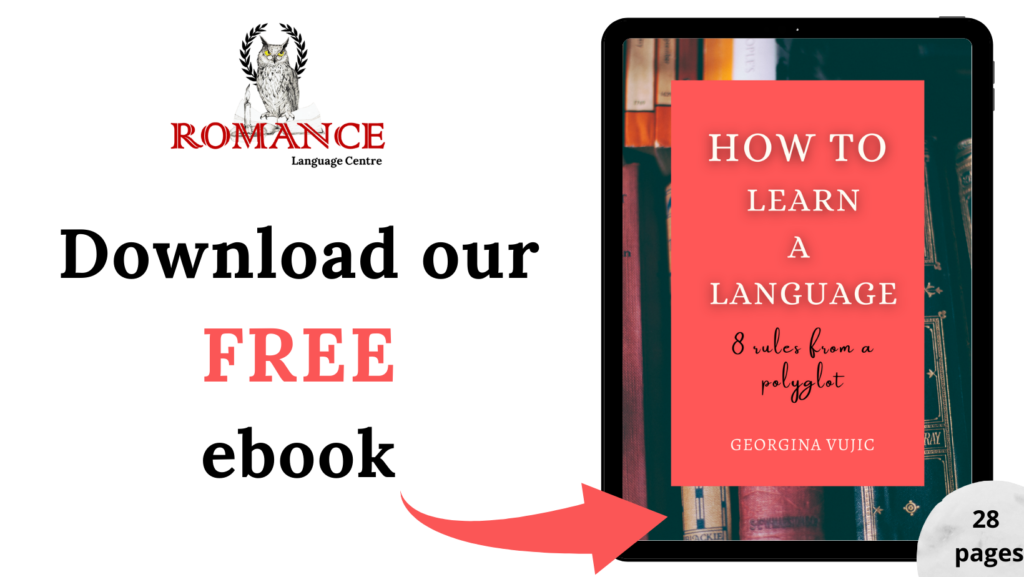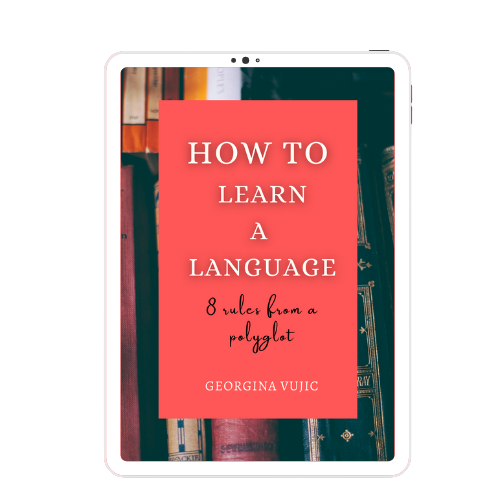Welcome to another chapter in our “Adventure to Fluency” series here at Romance Language Centre — where we bring Spanish to life through rich, unforgettable stories.
In this episode, we’re diving into the tragic and dramatic tale of Juana I of Castile, more famously known as Juana la Loca. But beyond royal intrigue and centuries-old scandal, this story is your perfect opportunity to practice the imperfect tense in real, meaningful context.
And why should you learn grammar through storytelling? Because grammar, on its own, is just structure — but when it’s embedded in a powerful narrative, it sticks. And the imperfect tense (el imperfecto) is one of the most essential tools for telling stories in Spanish: describing settings, emotions, habits, and background events.
In this post, you’ll:
- Learn the difference between the imperfect and other past tenses.
- See dozens of real examples of the Spanish imperfect tense in use, directly from Juana’s story.
- Practice recognizing and using the imperfect with comprehension tasks and tips throughout.
So if you’re ready to practice the imperfect tense in a way that’s intuitive, memorable, and tied to real culture — let’s travel back to 16th-century Spain.
SETTING THE SCENE: SPANISH IMPERFECTO IN CONTEXT
Let’s begin with Juana’s early years — the perfect setting to see the imperfect tense in action. In Spanish, the imperfect (el imperfecto) is used to describe background details, emotional states, ongoing actions, and habitual routines in the past. It sets the stage, painting the atmosphere rather than moving the plot forward. Think of it as the wide-angle lens of storytelling.
Take this sentence:
Juana vivía en un mundo de oro, piedra y tradición. Estaba rodeada por los mejores tutores y aprendía varios idiomas como el latín y el francés.
Translation: Juana lived in a world of gold, stone, and tradition. She was surrounded by the best tutors and was learning several languages such as Latin and French.
Here, the verbs vivía, estaba, and aprendía are all in the imperfect. Why? Because we’re describing the ongoing conditions of her life — not a single event, but a continuous backdrop of her upbringing.
From a young age, Juana era una mujer excepcionalmente inteligente y culta. She tenía una curiosidad profunda por el mundo, un rasgo poco común — y poco valorado — en las mujeres de su época. These are more imperfect verbs: era, tenía — again, showing states of being and habitual qualities rather than specific events.
As the daughter of the powerful Catholic Monarchs, Juana’s life was steeped in diplomacy, courtly expectations, and political obligation. Yet, even as a teenager, solía leer con avidez y reflexionaba sobre temas complejos — she used to read voraciously and often pondered complex ideas. This use of the imperfect continues to highlight not only what Juana did, but who she was becoming.
Through Juana’s childhood, we see exactly how the imperfect tense functions: to build character, establish atmosphere, and immerse us in a past that feels alive. It’s not just grammar — it’s storytelling.
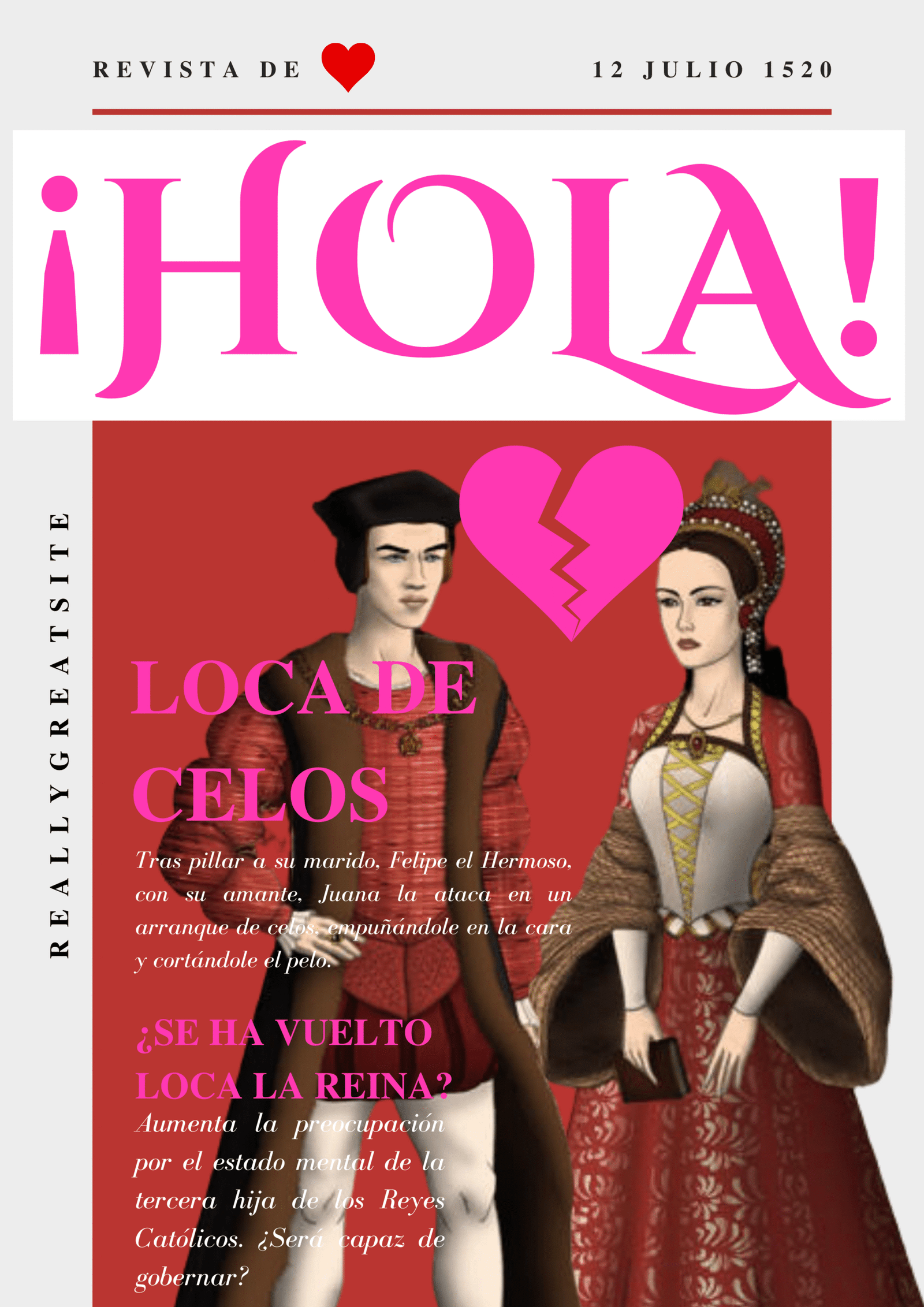
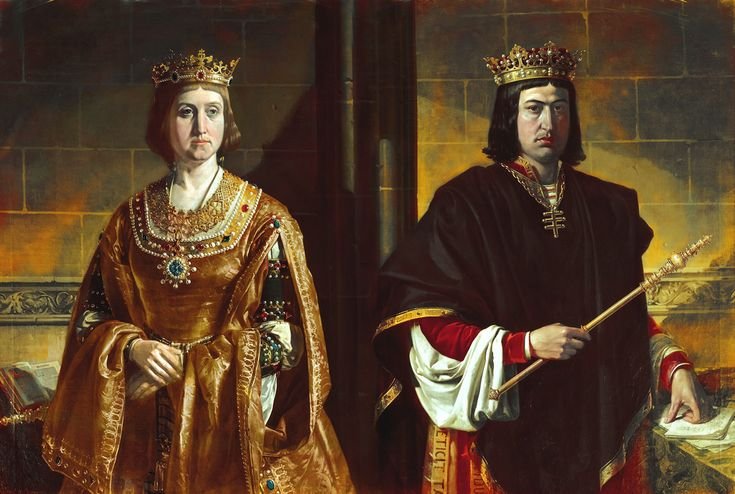
MARRIAGE OF CONVENIENCE – AND CONSEQUENCE
When Juana was just 17 years old, se casó con Felipe el Hermoso, archiduque de Austria. It was a union arranged for political advantage. The verb se casó is in the pretérito (indefinido) tense, which is used to mark a completed action: a specific moment in time. She got married. It happened. The story moves forward.
But what truly brings the narrative — and Juana’s emotional reality — to life is the imperfect tense. Let’s look at how Spanish uses it to describe how things felt, not just what happened:
Juana estaba enamorada, pero Felipe no sentía lo mismo. Él prefería la compañía de otras mujeres y disfrutaba ser el centro de atención.
In English:
Juana was in love, but Felipe didn’t feel the same. He preferred the company of other women and enjoyed being the center of attention.
Here we see the power of the imperfect:
- estaba enamorada — she was in love (ongoing emotional state)
- no sentía lo mismo — he didn’t feel the same (internal condition)
- prefería, disfrutaba — repeated preferences and habits
None of these verbs advance the timeline. Instead, they deepen our understanding of the characters. Felipe wasn’t cruel in one single moment — he habitually ignored Juana’s love. She didn’t have a fleeting crush — she was emotionally invested.
This contrast between preterite (se casó) and imperfect (estaba, sentía, prefería, disfrutaba) is key for learners. One tells you what happened. The other tells you what it was like to live it.
In stories — especially stories like Juana’s, full of inner turmoil and quiet heartbreak — the imperfect gives us access to the emotional truth. It’s the tense of memory, of nuance, of everything that lingers beyond the facts.
MADNESS OR MANIPULATION?
As Juana’s story unfolds, the distinction between historical record and rumor begins to blur. After the deaths of her two older siblings and her mother, Queen Isabel, Juana became the legitimate heir to the crown of Castile. However, both her father, Fernando, and her husband, Felipe, had their own ambitions. Each sought to claim power, casting doubt on Juana’s ability to rule.
This is where the narrative of her so-called madness takes center stage. After Felipe’s sudden death, stories began to circulate that Juana behaved obsessively. According to accounts, she refused to be separated from her husband’s body and traveled with it across the kingdom for weeks.
Take the sentence:
Lloraba constantemente y decía que nadie debía acercarse al ataúd.
@romancelanguagecentre ✨ UN PELÍN DE ESPAÑOL ✨ Today’s Spanish expression: pasar la noche en blanco 💤 It means you didn’t sleep a wink — maybe from nerves, excitement, or too much coffee ☕😅 👉 Curious how we teach real Spanish through stories, culture, and context? Visit us at https://romancelanguagecentre.com/ — see how we teach students to learn to understand, not just memorise. #spanishgrammar #spanishpodcast #learnspanish #spanishtiktok #spanishlessonsonline ♬ original sound – romancelanguagecentre
@romancelanguagecentre ✨ UN PELÍN DE ESPAÑOL ✨ This week’s bit of real Spanish: sudar la gota gorda. It means to sweat buckets — or to work really hard for something. 📚 Example: “Sudé la gota gorda en el examen.” Now it’s your turn: When did you sudar la gota gorda? Finish it below: “Yo sudé la gota gorda cuando…” 👇 A little Spanish, every week — Learn to Understand. #spanishgrammar #spanishpodcast #learnspanish
♬ original sound – romancelanguagecentre – romancelanguagecentre
@romancelanguagecentre Adventure to Fluency Podcast | S1EP2 | Duende: The Secret Power of Art 🎨 ✨ Did you know duende isn’t just a mischievous goblin? In Spanish, it’s also the magical force behind great art and deep emotion! 👉 Catch the full podcast episode + grab the free transcript and worksheet here: https://romancelanguagecentre.com/spanish-podcast/ LearnSpanish ElDuende SpanishVocabulary SpanishCulture AdventureToFluency #spanishgrammar #spanishpodcast
♬ original sound – romancelanguagecentre – romancelanguagecentre
This use of the imperfect tense — lloraba, decía — is essential for shaping the emotional landscape. These actions are not pinned to a single moment. Instead, they are ongoing, repeated, and undefined in their duration. The imperfect invites us into her internal world. It allows us to imagine her anguish and isolation rather than simply observe the timeline of events.
Whether these accounts were true or exaggerated for political reasons is still debated. But grammatically, the imperfect helps us build a psychological portrait. It captures what Juana might have been feeling, thinking, or doing over an extended period. This makes it a powerful tool not just for storytelling but for understanding how the Spanish language handles emotion and uncertainty.
In narratives of trauma, grief, and power, the imperfect doesn’t just describe — it immerses us.
IMPERFECT TENSE LENSE: SUMMARY OF HOW AND WHEN TO USE IT
Let’s take a moment to consolidate what we’ve learned about the imperfect tense, using Juana’s dramatic life as our storytelling backdrop. This tense is one of your most powerful tools for describing atmosphere, emotional depth, and background in Spanish narratives.
1. Describing Background and Setting
Use the imperfect to talk about:
- Time and weather
- Physical appearance and age
- Emotional and mental states
- Ongoing scenery or conditions
Example:
Cuando era joven, Juana tenía el cabello rubio y los ojos brillantes.
(When she was young, Juana had blonde hair and bright eyes.)
These verbs — era, tenía — describe states that were ongoing, not tied to a specific moment.
2. Expressing Habitual or Repeated Actions
The imperfect is ideal for describing actions that happened regularly or without a defined beginning or end.
Example:
Juana rezaba cada noche y pensaba en su madre.
(Juana prayed every night and thought of her mother.)
This paints a picture of her daily routine or emotional habits during a difficult time.
3. Talking About Simultaneous Past Actions
The imperfect lets you describe two things happening at the same time in the past.
Example:
Mientras viajaba, cantaba canciones tristes.
(While she traveled, she sang sad songs.)
Both actions — viajaba, cantaba — are happening in parallel, without interruption.
4. Describing Mental or Emotional States
When we want to describe what someone was feeling or thinking, especially over time, we use the imperfect.
Example:
Sentía una tristeza profunda que no desaparecía.
(She felt a deep sadness that would not go away.)
These are not one-time feelings. They linger, which is exactly what the imperfect is built to express.
JUANA & BRITNEY: ECHOES ACROSS CENTURIES
So what does Juana la Loca have in common with pop princess Britney Spears? Surprisingly, a lot. Both were placed under the control of powerful family members. Both were painted as unstable to justify their lack of agency.

In 2008, Britney’s father was granted legal conservatorship over her life, finances, and career. Juana, likewise, was imprisoned by her father and then her son. Both women’s stories raise questions about who gets to define sanity, and how power can be used to silence inconvenient women.
Juana vivía encerrada en Tordesillas, esperando noticias del mundo. Britney pasaba años bajo vigilancia, sin control de su vida.
These imperfect phrases highlight the duration and emotional atmosphere of their experiences.
WHY YOU SHOULD PRACTICE IMPERFECT TENSE
Mastering the imperfect tense goes far beyond grammar rules. It’s about learning how to express emotion, describe time, and create atmosphere in your storytelling. Many Spanish learners tend to rely heavily on the preterite, often because it feels more straightforward. However, if your goal is to speak naturally and fluently, the imperfect is essential.
Stories like Juana’s give you a living example of how this tense works. You see it in action, embedded in context and emotion.
When you learn through stories, grammar becomes something you feel. You begin to understand how native speakers use language to reflect memory, emotion, and experience — not just isolated facts. That’s when real fluency starts to take shape.
Ahora te toca a ti! Think of a moment in your life when you felt misunderstood, or were waiting for something beyond your control. Try expressing it in the imperfect tense.
Example:
Cuando era adolescente, soñaba con viajar lejos.
Want feedback? Share it in the comments of our podcast or on Instagram with the hashtag #FreeJuanaLaLoca.
LEARN SPANISH WITH ROMANCE
At Romance Language Centre, we believe in learning Spanish through stories that make you feel something. Stories that stay with you. That’s why we don’t just teach verbs and lists — we teach meaning.
Juana’s story is more than history — it’s a reminder that language has power.
And with every verb you learn, you’re building your own power — to express, to connect, to understand.
So next time you reach for a verb in the past, ask yourself: do I want to report what happened, or do I want to tell the story?
If it’s the story — reach for the imperfecto.
¡Hasta la próxima, aventureros del español!





